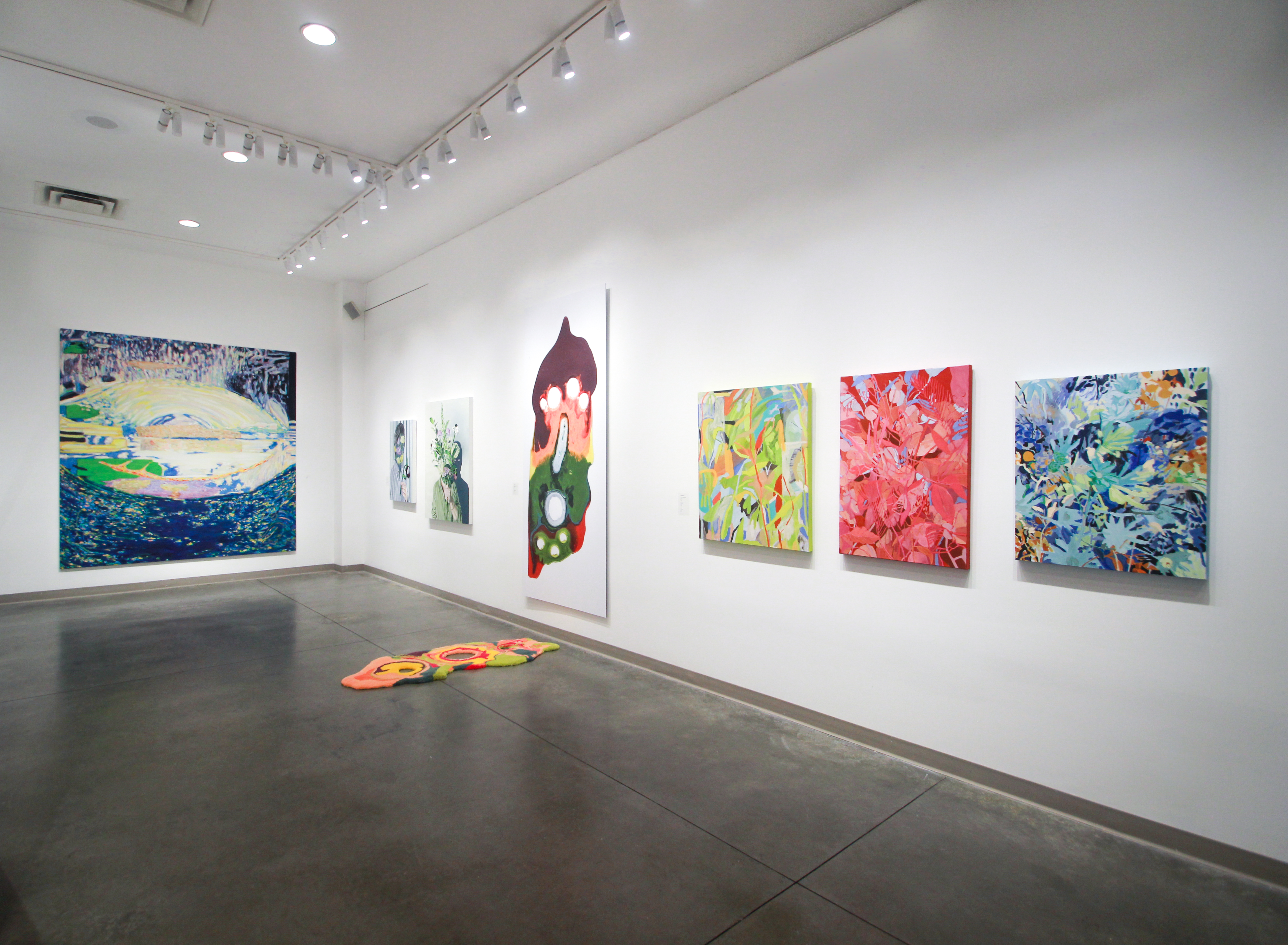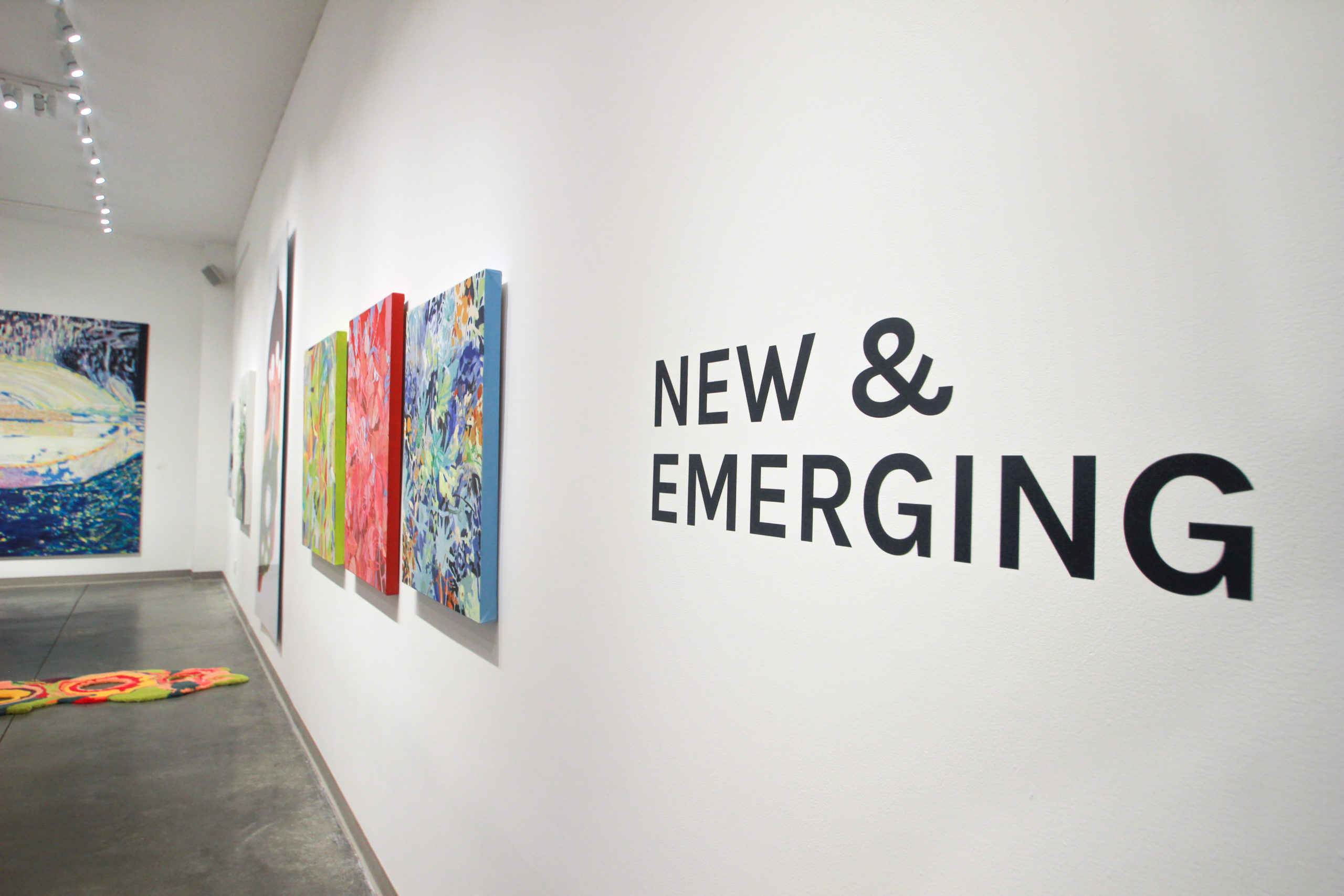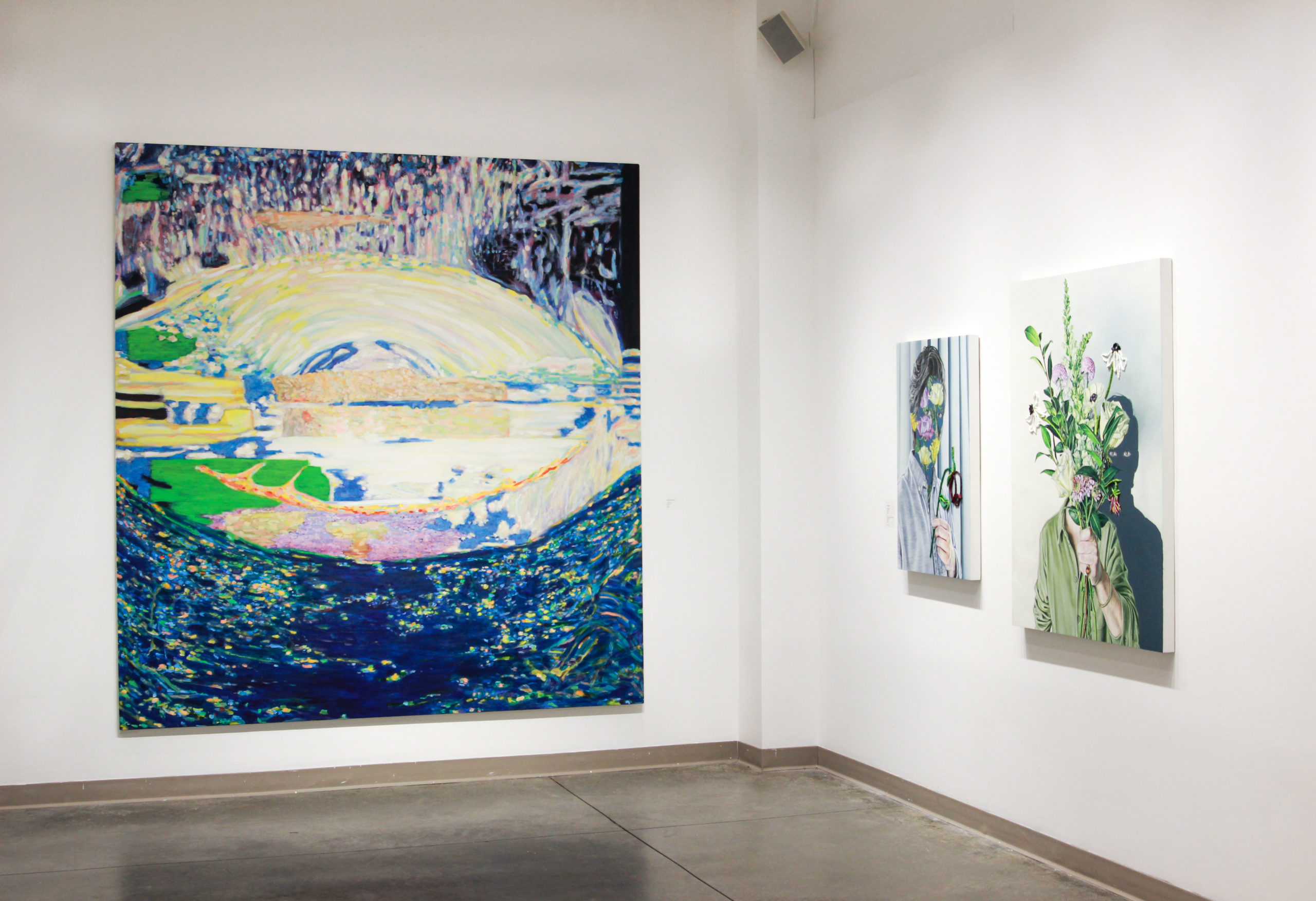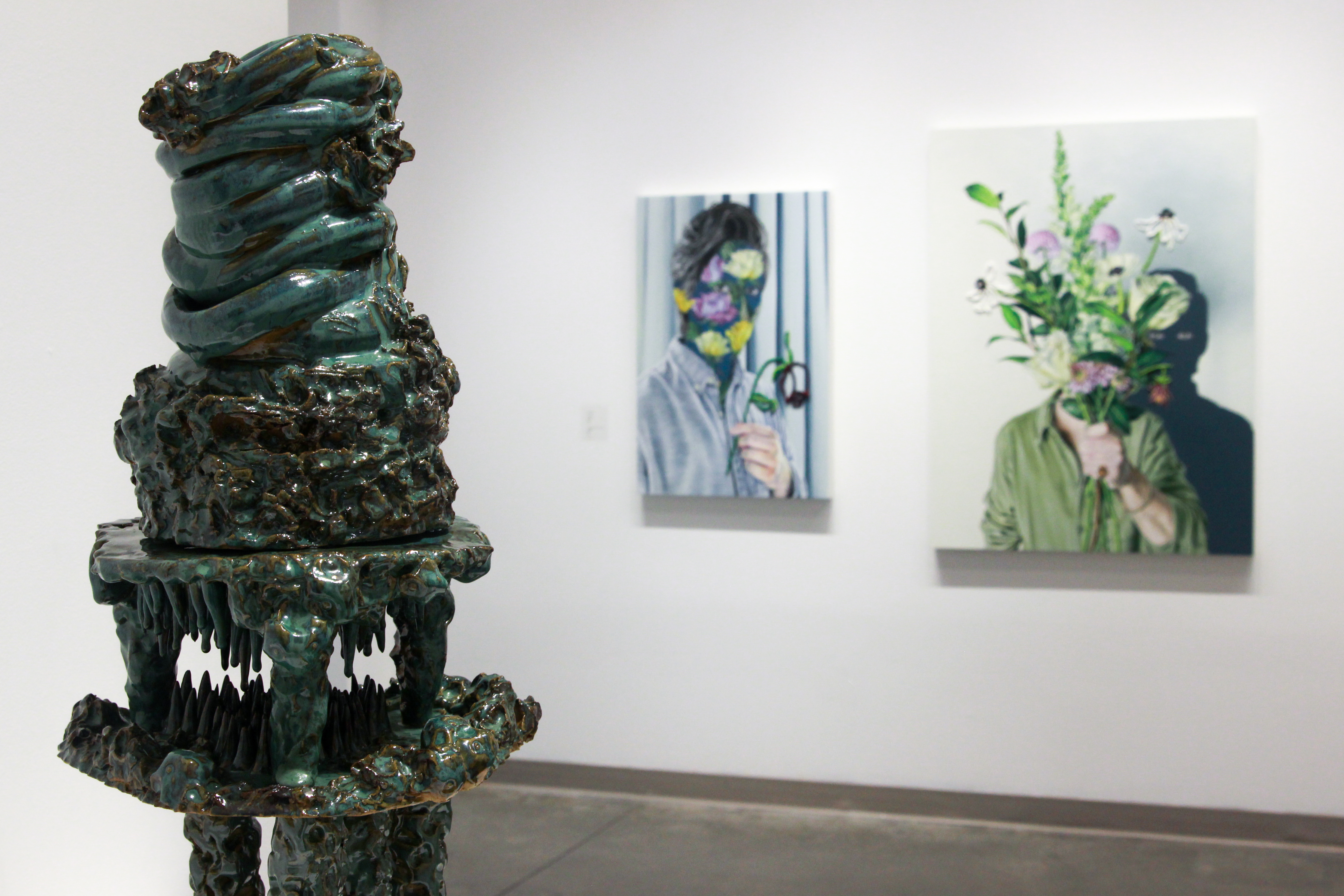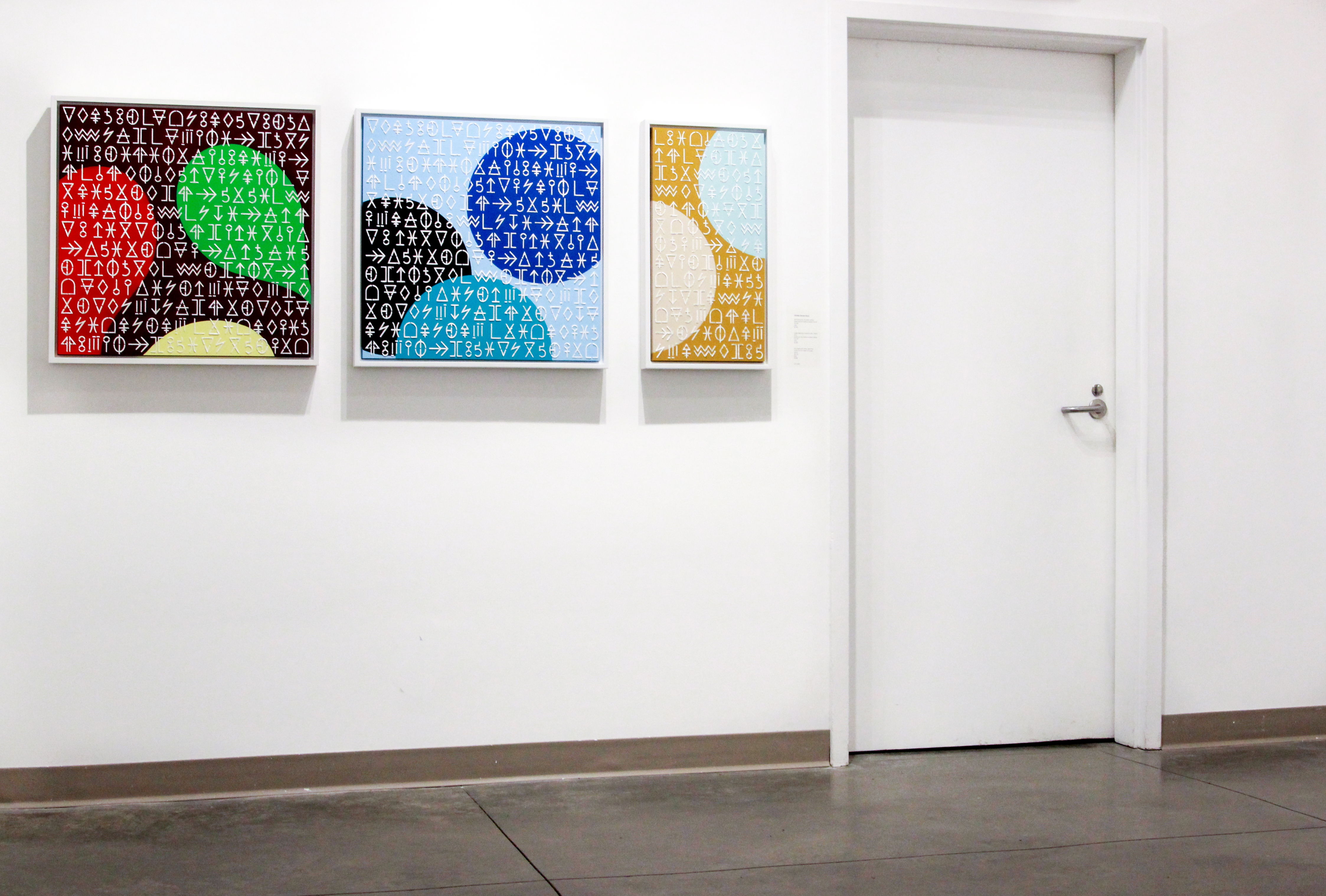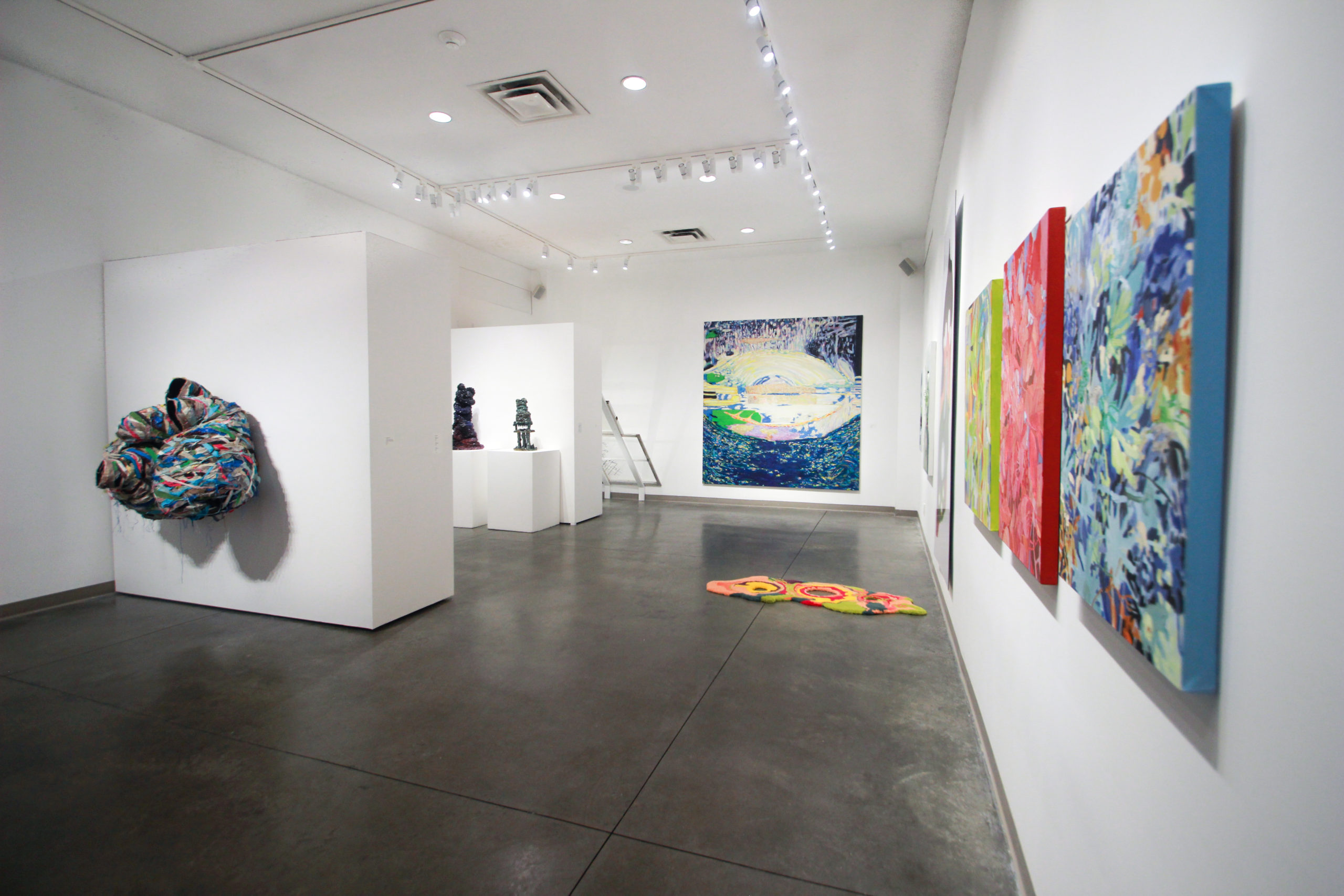New & Emerging
January 15 – February 26, 2022
New & Emerging, juried by artist and educator Reyhan Yazdani, graphic artist Yaimel López Zaldívar and Seymour Art Gallery’s curator/director Vanessa Black, is an exhibition that provides exposure to emerging artists.
This fresh and eclectic show presents a collection of work by each of the nine exhibiting artists in a range of media including ceramics, painting, sculpture, photography and installation. Despite this variety, common themes arise and unlikely relationships are formed throughout the exhibition
Artists: Ghislain Brown-Kossi, Aakansha Ghosh, Kirk Gower, Khim Hipol, Emily Kirsch, Amberlie Perkin, Malina Sintnicolaas, Dion Smith-Dokkie, and Julia Soderholm
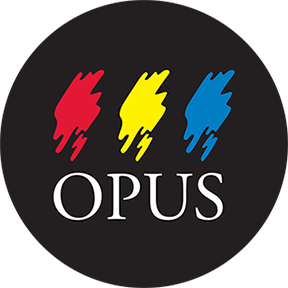
Special thanks to Opus Art Supplies North Vancouver for their support of this exhibition

Ghislain Brown-Kossi
Ghislain Brown-Kossi describes the series titled Symbols as representing a universal language that everyone can understand or derive a unique meaning from. His paintings depict languages using plaster casts upon bright pops of color. The artist is also expressing a return to ancestral values through the use of symbols as our earliest form of writing. For Brown-Kossi, symbols are at the heart of his imaginative life as they open the mind to the unknown and the infinite. They encompass this recurring theme, ranging from European undeciphered writing systems and Egyptian hieroglyphics to modern advertising, comics, technology, and all of the interconnectedness historic and current communication channels inform and provide. Each symbol used has many meanings in various parts of the world, allowing for the resulting interpretation to be based on the viewer’s background and personal experience.

Aakansha Ghosh
Aakansha Ghosh is a visual artist who works across mediums using found everyday objects and building materials. Her research attempts to understand the complexity associated with notions of defining, sustaining, and accepting a place as a geographical identity. Her works further explore the implications of these identities in relation to how a place becomes home. Interested in sites and objects, her work weaves an understanding of place and home that navigate their presence through each other. She earned a BVA from Maharaja Sayajirao University of Baroda, India (2018) and an MFA from Simon Fraser University, Canada. Ghosh currently lives and works as a guest on the unceded territories of the Musqueam, Squamish and Tsleil-Waututh First Nations.

Kirk Gower
Kirk Gower explores queer identity using contemporary portraiture and images. He is interested in the way oil paint has the ability to both seduce and repulse the viewer, and plays with this push and pull. After painting a realistic image, Kirk defaces his work by adding rudimentary drawings in thick paint. This content can be nostalgic, lighthearted, or provocative. By adding these interventions, Kirk draws attention to the materiality of his work and new readings are implicated.
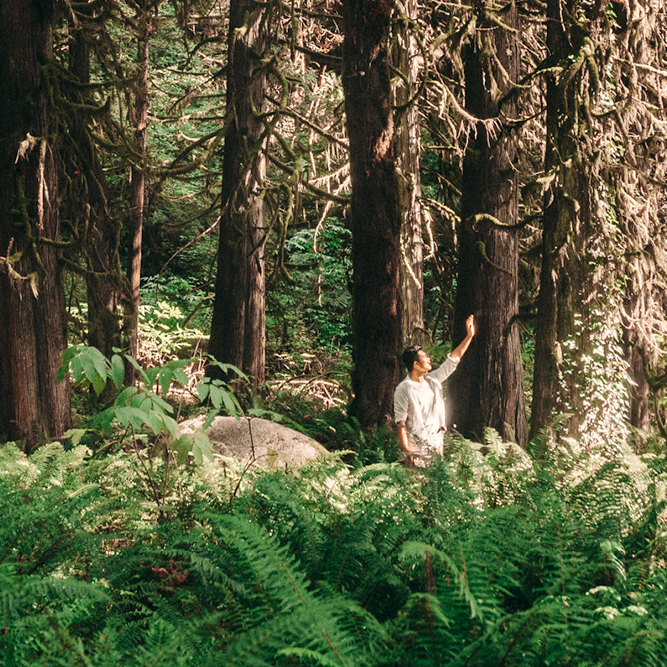
Khim Hipol
Khim Hipol intends to create a work with photography to speak about the land he lives on. North Vancouver, the unceded territories of the Musqueam, Squamish and Tsleil-Waututh Nations, has been his home since migrating from the Philippines in 2015. ‘I am here, you are here’, is a project that highlights Hipol’s appreciation of the new land he is residing on. It makes him look at this land’s history, story, and purpose. Even more, ‘I am here, you are here’, showcases the beauty of North Vancouver, but it also upholds values and context that could be studied, which aims to acknowledge and deepen viewers’ understanding of the land.

Emily Kirsch
‘The Blobs’ is a series of interdisciplinary artworks created by Vancouver island emerging artist Emily Kirsch. Through a process of visual exploration Kirsch intuitively collects colours, shapes, and textures that are incorporated into their distinct visual language. This constant searching for visual additions is driven by the love and need for learning and play. From this base, ‘The Blobs’ are born from a catalyst of acrylic pours translated into print and textile mediums. In all forms, ‘The Blobs’ beckon us closer.
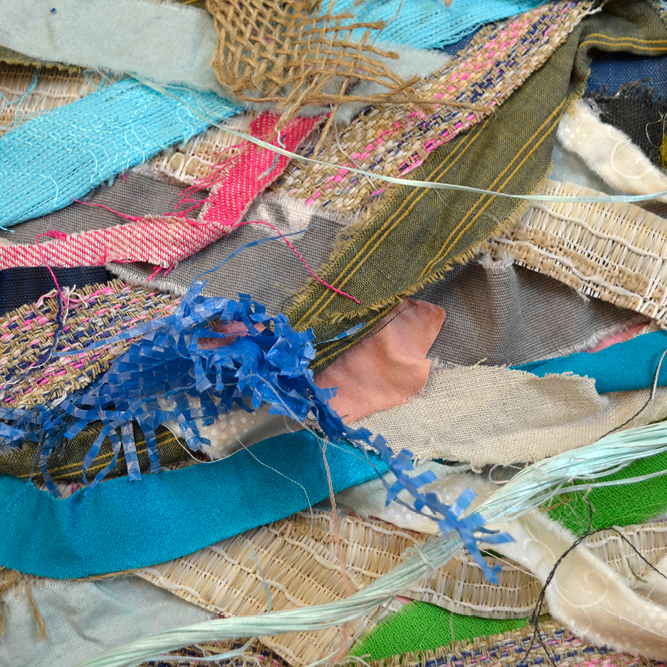
Amberlie Perkin
Amberlie Perkin is interested in the interplay of grief and ecology, and nature and the body. Through curious engagement with the natural world and rigorous material exploration, Perkin has found new ways to understand and respond to death. Her process enacts the materiality of mourning – using grief and loss as lively material with which to build new forms while formalizing the presence of absence. This sculpture is an exploration of lost kinship, the desire to nurture and steward, miscarriage, and experiences of embodied grief. Building the hollow forms and then wrapping them repeatedly with fabric and found material scraps was a means to process and articulate loss while nurturing persistent ghosts.

Malina Sintnicolaas
Malina Sintnicolaas considers her sculptural work to be manifestations, transmutations, or “petrifications” of emotions into a physical form. Her practice is questioning the ways in which one can represent emotions such as depression, trauma, and anxiety with a physical form and in what ways can one induce empathy for an object even if it is alien or abstract. Working with texture, material properties, and form, her sculptures are bodily, visceral, and drive to evoke feeling to create an empathic landscape that will suggest an understanding for states of mind which are difficult to be described verbally.

Dion Smith-Dokkie
Generated with seafoam videos, self-recordings, techno-chromatic effects, ‘Lucious Arc I’ acts as a florid world-boundary: enveloping, transporting Smith-Dokkie’s body and local world in a manifold surface, matrix. Mediation and translation are key operations in Smith-Dokkie’s practice: they’ve been working with seafoam since arriving in Vancouver. Some flowers open when the wind contacts them— the foam was like an anemone field. Then the foam expressed novel states: clouds, mirrors, reefs, oceans: interfacing, mutating.
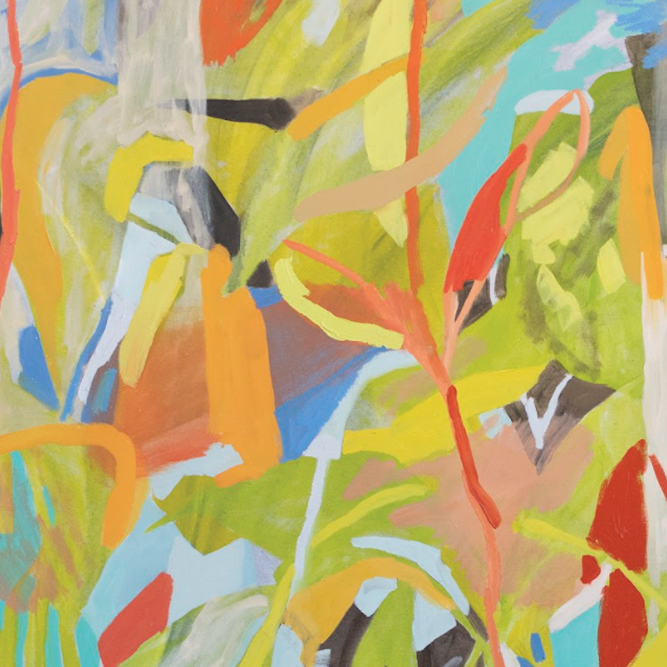
Julia Soderholm
Julia Soderholm’s curiosity and attentiveness to her natural environment is apparent in her paintings, where each brushstroke starts as an observation. Through the act of letting go of representation, Julia works to express her experience and memories of land with gestural mark-making. In this retelling of landscape, colours become saturated, forms blur with movement, and shapes distort. Her series “Digging Holes in November” in particular celebrates paying attention to the small and miraculous ways the land continues to cycle through re-growth.

